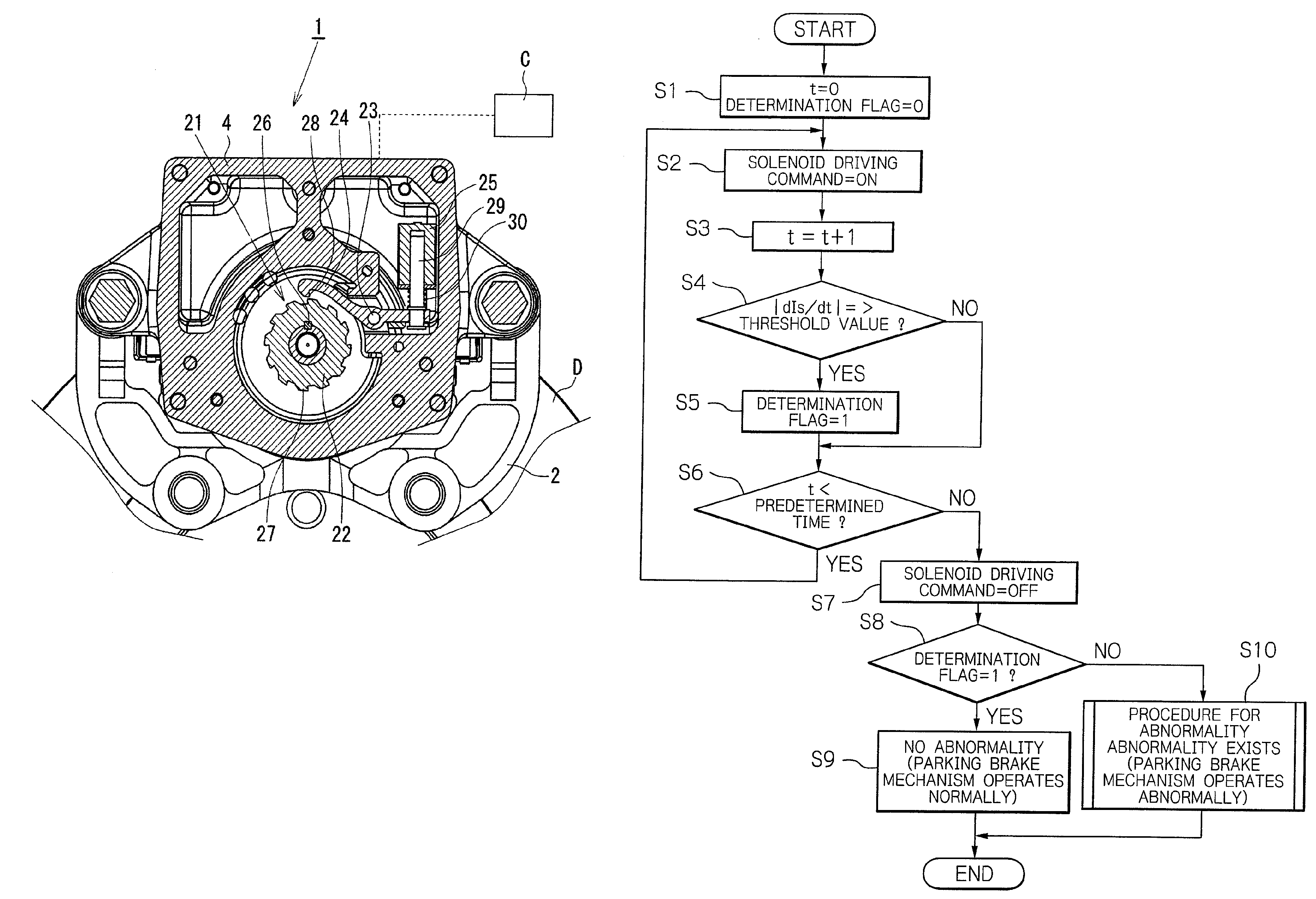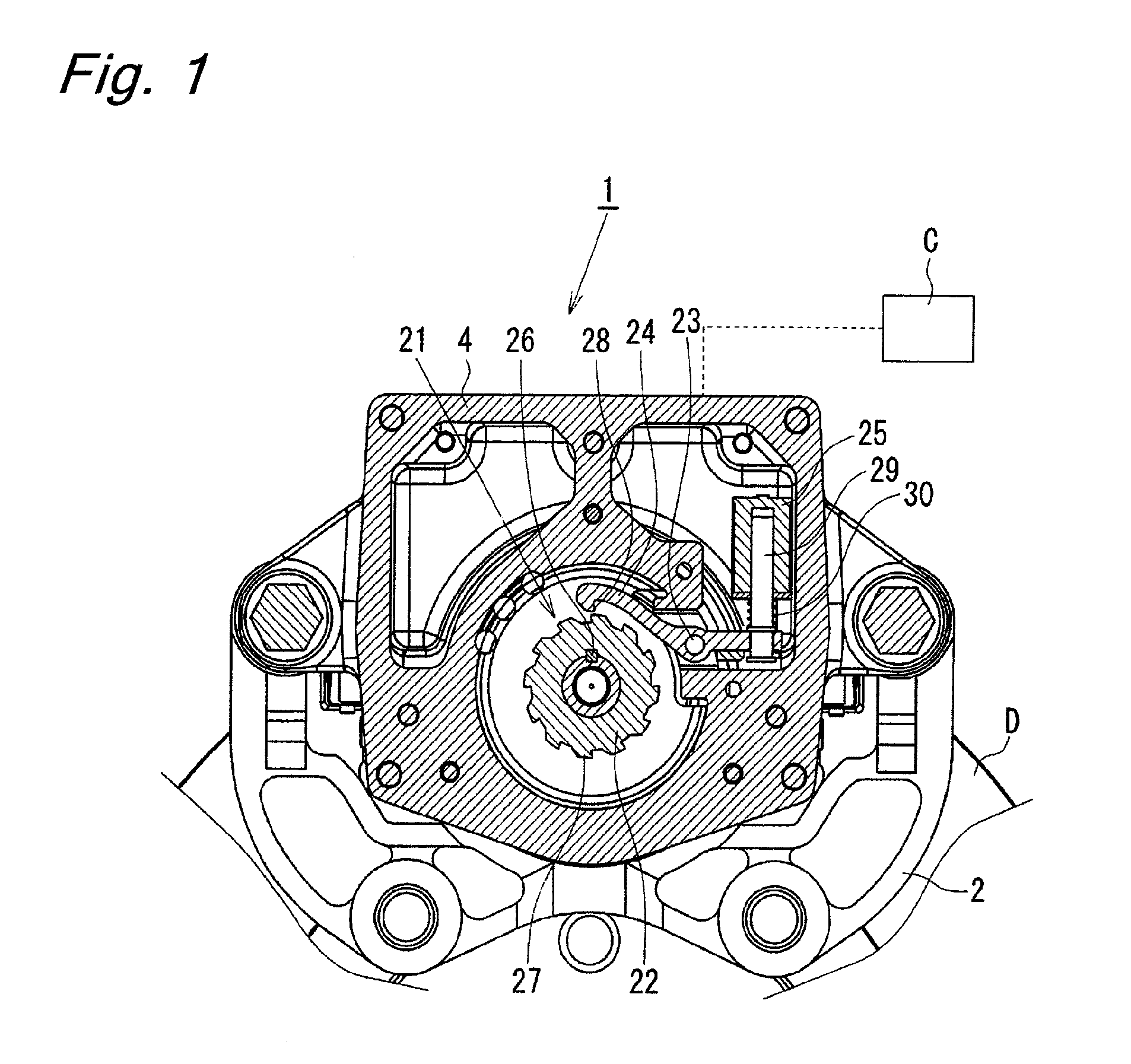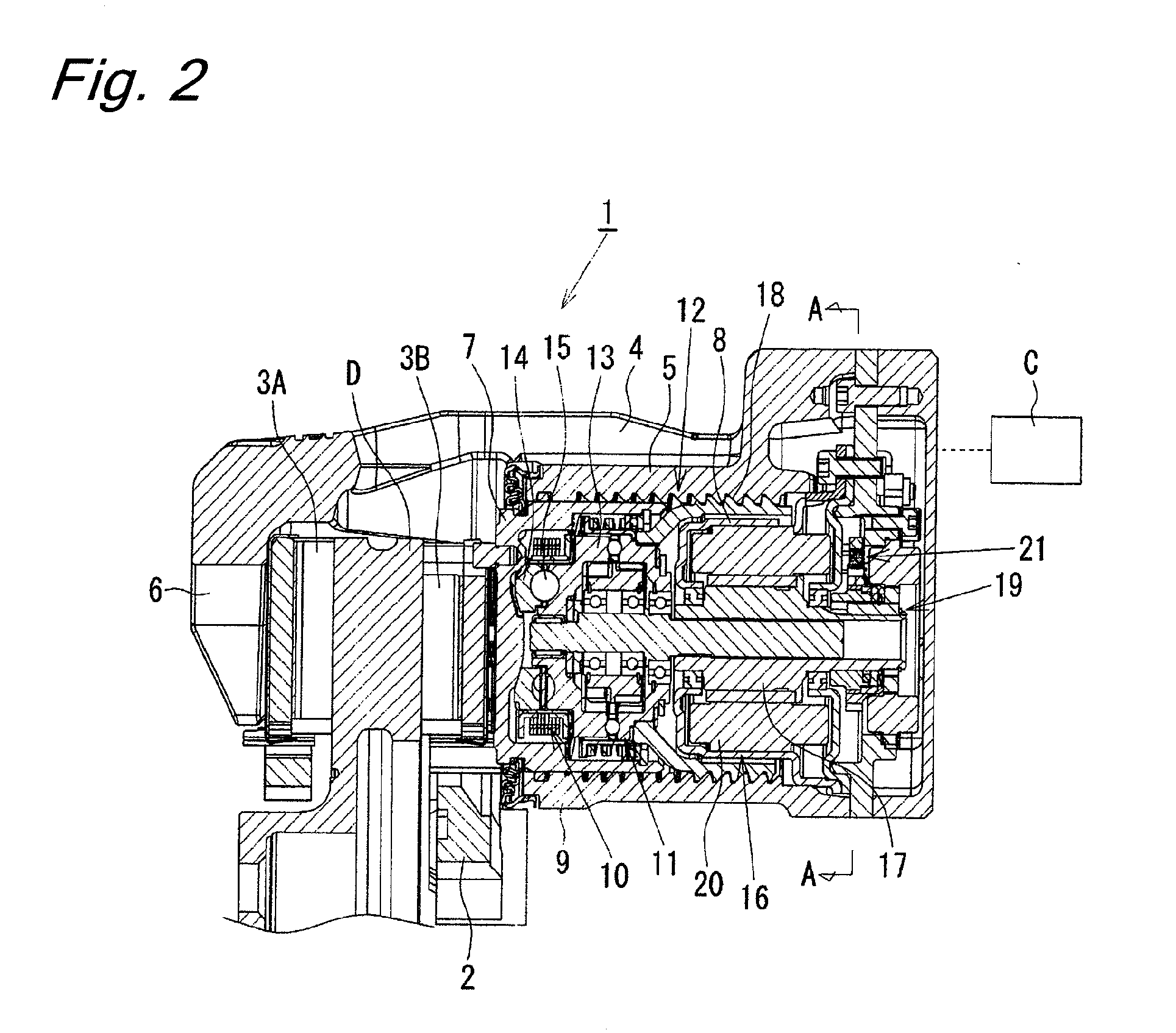Electric disk brake
- Summary
- Abstract
- Description
- Claims
- Application Information
AI Technical Summary
Benefits of technology
Problems solved by technology
Method used
Image
Examples
first embodiment
[0073]The engagement pawl 24 extends on the both sides of the pin 23 around which the engagement pawl 24 rotates. An engagement portion 28 is formed at one end of the engagement pawl 24, and engagement and disengagement of the engagement portion 28 with and from one of the teeth 27 of the ratchet wheel 22 is caused by a rotation of the engagement pawl 24 around the pin 23. The teeth 27 of the ratchet wheel 22 and the engagement portion 28 of the engagement pawl 24 each are formed to have a hook-like shape with a surface inclined in a certain direction, and serve as a lock mechanism preventing a rotation of the ratchet wheel 22 in the counterclockwise direction in FIG. 1 (brake releasing direction) when they are engaged with each other. A rotation of the ratchet wheel 22 in the clockwise direction (brake applying direction) generates a force for rotating the engagement pawl 24 in a direction causing the engagement pawl 24 to be disengaged from the tooth 27. In the first embodiment, t...
second embodiment
[0095]As shown in FIG. 6, in the parking brake mechanism of the second embodiment, in a normal state, the engagement pawl 24 abuts against a stopper 32 by receiving a spring force of a coil spring 33, and the engagement portion 28 is disengaged from the tooth 27 of the ratchet wheel 22. A plunger 35 of a solenoid actuator 34 (hereinafter referred to as “solenoid 34”) is situated at a retracted position by receiving a spring force of a return spring 36. Application of an electric current to the solenoid 34 causes the plunger 35 to protrude and the engagement pawl 24 to rotate against the spring force of the coil spring 33, whereby the engagement portion 28 is engaged with the tooth 27 of the ratchet wheel 22. As shown in FIG. 6(c), a predetermined play P is provided between the engagement pawl 24 and the plunger 35 while the engagement portion 28 is engaged with the tooth 27 and the plunger 35 is situated at a retracted position by receiving the spring force of the return spring 36.
[...
third embodiment
[0099]As shown in FIG. 7, an electric disk brake 37 of the third embodiment comprises a ball screw mechanism 38 as a rotation-liner motion converting mechanism. A rotation of a shaft 40 of a motor 39 is slowed down and transmitted to a rotation member 42 by engagement between a pinion 41 attached to the shaft 40 and a spur wheel 43 attached to the rotation member 42 of the ball screw mechanism 38. A rotational motion of the rotation member 42 is converted by the ball screw mechanism 38 into a linear motion of a linear motion member 44 serving as a piston so that the brake pads 3A and 3B are pressed against the disk rotor D, whereby a brake force is generated.
[0100]A parking brake mechanism 45 is disposed at the electric disk brake 37. The parking brake mechanism 45 is configured as follows. A plurality of engagement holes 46 are circumferentially formed at the spur wheel 43, and the spur wheel 43 is prevented from rotating by inserting an engagement pin 47 into one of the engagement...
PUM
 Login to View More
Login to View More Abstract
Description
Claims
Application Information
 Login to View More
Login to View More - R&D
- Intellectual Property
- Life Sciences
- Materials
- Tech Scout
- Unparalleled Data Quality
- Higher Quality Content
- 60% Fewer Hallucinations
Browse by: Latest US Patents, China's latest patents, Technical Efficacy Thesaurus, Application Domain, Technology Topic, Popular Technical Reports.
© 2025 PatSnap. All rights reserved.Legal|Privacy policy|Modern Slavery Act Transparency Statement|Sitemap|About US| Contact US: help@patsnap.com



